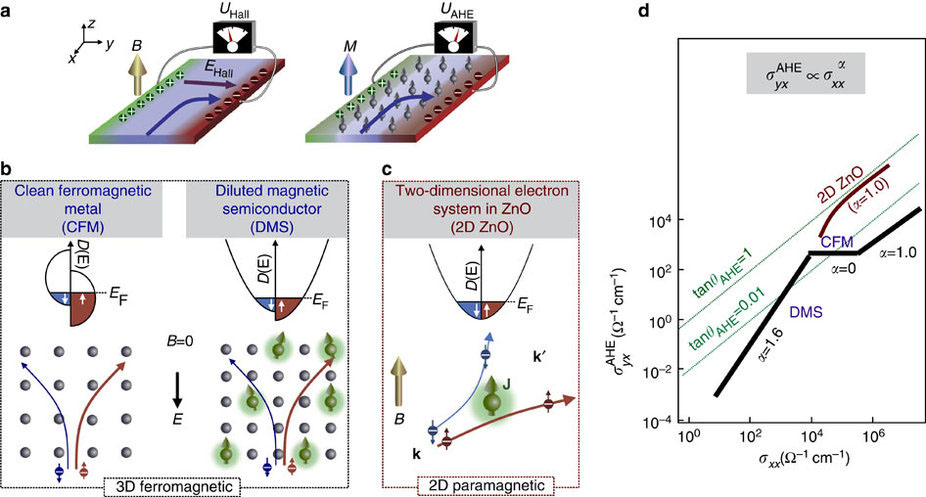非磁性二次元電子系における異常ホール効果の観測
Observation of anomalous Hall effect in a non-magnetic two-dimensional electron system
2017年3月16日 Nature Communications 8 : 14777 doi: 10.1038/ncomms14777

異常ホール効果(時間反転対称性のない系で起こるホール効果)は、主として強磁性秩序を有する物質で観測されてきた。しかし、磁気モーメントを導入すると、非ドープ構造の場合と比較してデバイス性能が低下するため、高移動度二次元電子系で異常ホール効果を実現させることが難しい。今回我々は、量子ホール効果を示すさまざまなMgZnO/ZnOヘテロ構造において異常ホール効果が系統的に現れることを観測した。これらの名目上非磁性のヘテロ構造は、低温において、清浄な強磁性金属と同様の異常ホール効果応答を示し、同時に約20°という大きな異常ホール角(θAHE)を維持している。そうした挙動は、局在常磁性中心による電子のスキュー散乱に起因して異常ホール効果が生じるGiovannini–Kondoモデルと一致している。今回の研究は、二次元電子系における多体相互作用の新たな側面を明らかにし、非磁性系においてどのように異常ホール効果が現れうるか示した。
Corresponding Author
Anomalous Hall effect, a manifestation of Hall effect occurring in systems without time-reversal symmetry, has been mostly observed in ferromagnetically ordered materials. However, its realization in high-mobility two-dimensional electron system remains elusive, as the incorporation of magnetic moments deteriorates the device performance compared to non-doped structure. Here we observe systematic emergence of anomalous Hall effect in various MgZnO/ZnO heterostructures that exhibit quantum Hall effect. At low temperatures, our nominally non-magnetic heterostructures display an anomalous Hall effect response similar to that of a clean ferromagnetic metal, while keeping a large anomalous Hall effect angle θAHE≈20°. Such a behaviour is consistent with Giovannini–Kondo model in which the anomalous Hall effect arises from the skew scattering of electrons by localized paramagnetic centres. Our study unveils a new aspect of many-body interactions in two-dimensional electron systems and shows how the anomalous Hall effect can emerge in a non-magnetic system.

